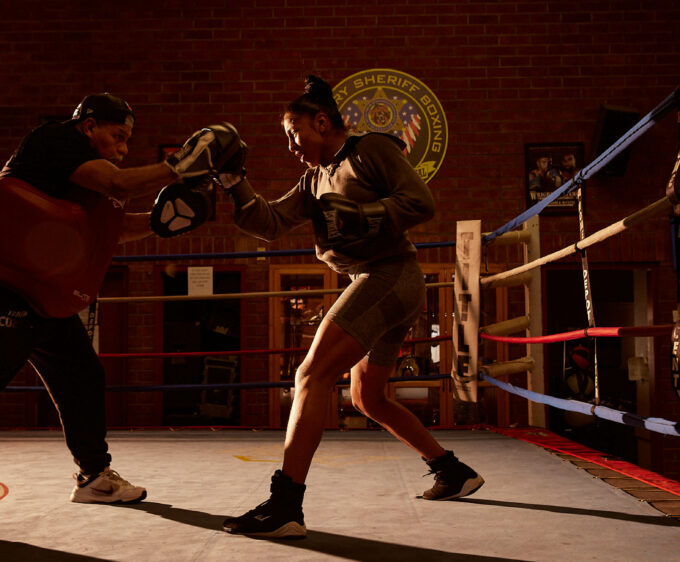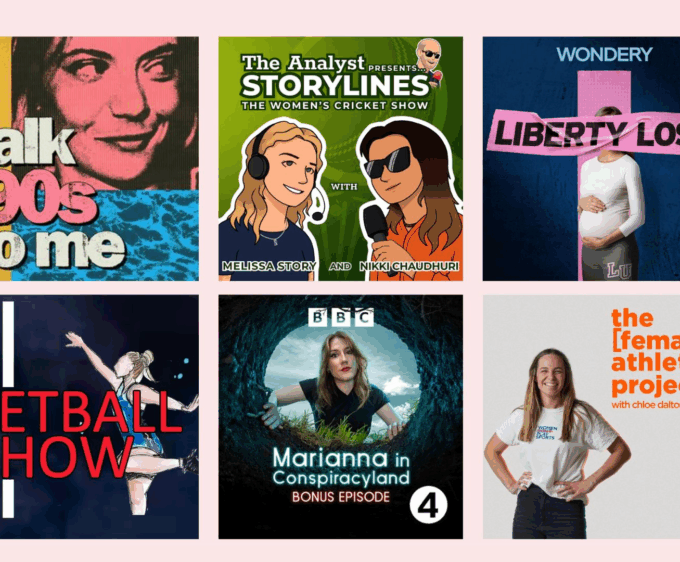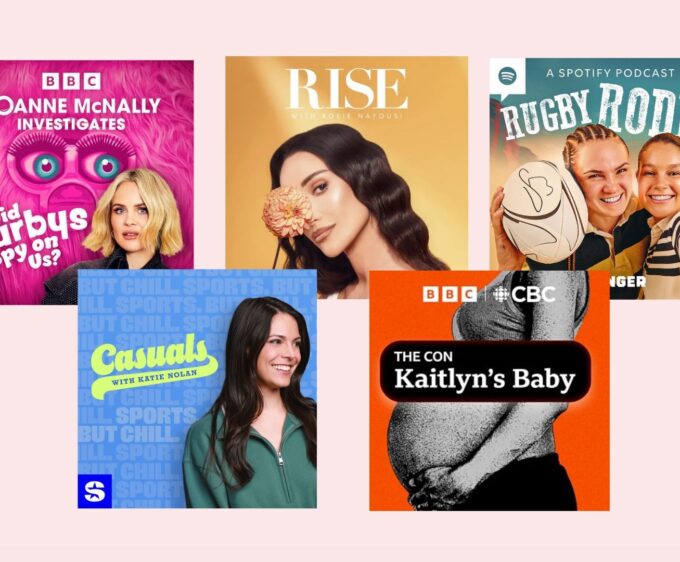
Blood, Sweat & History
Move over, Tyson-Paul—Taylor vs. Serrano’s rematch stole the show. Two warriors, 60 million viewers, and a fight that changed everything. This isn’t just a story about boxing; it’s about how one fight proved women’s sports can dominate the spotlight.
By Lou M
The two women stood in the ring, breathing heavily, both waiting to be crowned the winner. One with a visible open wound above her eyebrow, the other with a black eye forming before, well, our very eyes. The crowd screaming and cheering. A voice came over the loudspeaker: “By the judges’ unanimous decision, STILL the Undisputed Super Lightweight World Champion… Katie Taylor!”
On 15 November 2024, at AT&T Stadium in Arlington, Texas, Katie Taylor and Amanda Serrano faced off as co-headliners in a highly anticipated rematch that had all the boxing world talking. The bout, streamed free (to subscribers) live on Netflix, was a landmark event, generating unprecedented visibility for women’s boxing. Netflix reported that nearly 50 million households globally tuned in live, making the fight the most-watched professional women’s sporting event in U.S. history. This fight was more than just a sporting event; it was a cultural milestone that highlighted the evolution and growing prominence of women’s boxing.

“Are you staying up?” My WhatsApp messages pinged in my annually, recently resurrected ‘Secret Santa’ group.
“Staying up?! The ring walk will be about 4 a.m., I might set my alarm clock.”
“No, no, you need to be up by 3 a.m. Taylor vs. Serrano is on the undercard. That is the fight!” I fired back.
Messages poured in as my friendship group—men and women, parents and singles, sporty and non-sporty, all in our early 30s—contemplated sacrificing sleep for a fight. And not just any fight: Jake Paul and Mike Tyson were going head-to-head in Arlington, Texas. Why were they all so intrigued? Maybe it was nostalgia. The thought of Iron Mike back in the ring carried a sense of history. Maybe it was curiosity. A YouTuber-turned-polarising-boxing-personality facing one of the sport’s legends was undeniably surreal.
Why was I excited? I wanted my gang of friends that have expanded and extended over the years to witness what I suspected to be one of the best women’s boxing matches they would ever see—something probably over half of them had never done.
Here’s where I should say: I LOVE boxing. Women’s boxing, men’s boxing—I’d probably even watch kids boxing if it were allowed. Was I always a fan? No. Not really. In fact, before 2022, I’d only ever watched a handful of fights, and I’d certainly never stepped foot in a boxing gym. Then came the Shields vs. Marshall event at The O2. I hadn’t planned to go; someone at the office offered me their spare ticket, and I went on a whim. That night, sitting in a stadium packed with men and women, I watched an all-female card deliver one of the best events I’ve ever attended.
Claressa Shields faced Savannah Marshall in a historic unification bout, with Shields emerging victorious in a gruelling fight that was as technically brilliant as it was captivating. Over two million viewers tuned in on Sky Sports, making it the most-watched women’s professional boxing event in history at the time. I was hooked. The next day, I booked a boxing class, and I haven’t looked back since.
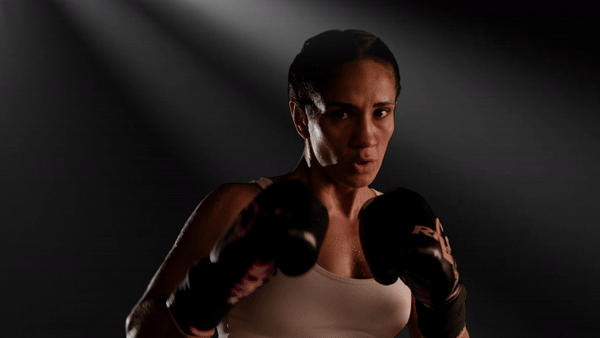
Boxing has become personal to me. It makes me feel free, empowered, and strong. I’ve swapped bad habits for good ones (no longer will you find me lingering in a pub after work or sleeping till lunchtime on the weekends—I have a boxing class to catch). It’s connected me to people and reshaped how I see myself. That Shields vs. Marshall fight was life-changing, and its impact wasn’t confined to me alone. Events like that have proven that women’s boxing isn’t just viable; it’s transformative.
So why was I so excited to see the rematch of Katie Taylor and Amanda Serrano? Because this wasn’t just a boxing event; it was a cultural moment.
Katie Taylor, from Bray, Ireland, has been the face of women’s boxing for over a decade. A five-time amateur world champion and Olympic gold medallist in 2012, Taylor turned professional in 2016, immediately changing the sport. Amanda Serrano, meanwhile, brought her own storied legacy: a seven-division world champion, born in Puerto Rico and raised in Brooklyn, whose ferocity in the ring has defined her career. Serrano was the first Puerto Rican boxer in history, male or female, to win world titles in seven weight divisions. Together, these two women represent the very best of the sport—its evolution, its excellence, and its promise.
The stakes for this fight were monumental. Their first meeting in 2022 made history as the first women’s bout to headline Madison Square Garden, filling the iconic venue with a sold-out crowd and drawing an audience of 1.5 million on DAZN—at the time, the most-watched female-headlined boxing broadcast. The bout was a ten-round war that tested the limits of both fighters, with Taylor narrowly securing victory by split decision. Serrano, who landed more punches but was edged out by Taylor’s precision and counterpunching, walked away with a clear determination to even the score. The event’s impact extended far beyond the ring, earning prestigious accolades like Sports Illustrated’s Fight of the Year and The Ring’s Event of the Year for 2022.
Financially, it was a groundbreaking moment for women’s boxing. Both Taylor and Serrano earned career-high purses of $1 million each, setting a new standard and proving the commercial viability of the sport at the highest level.
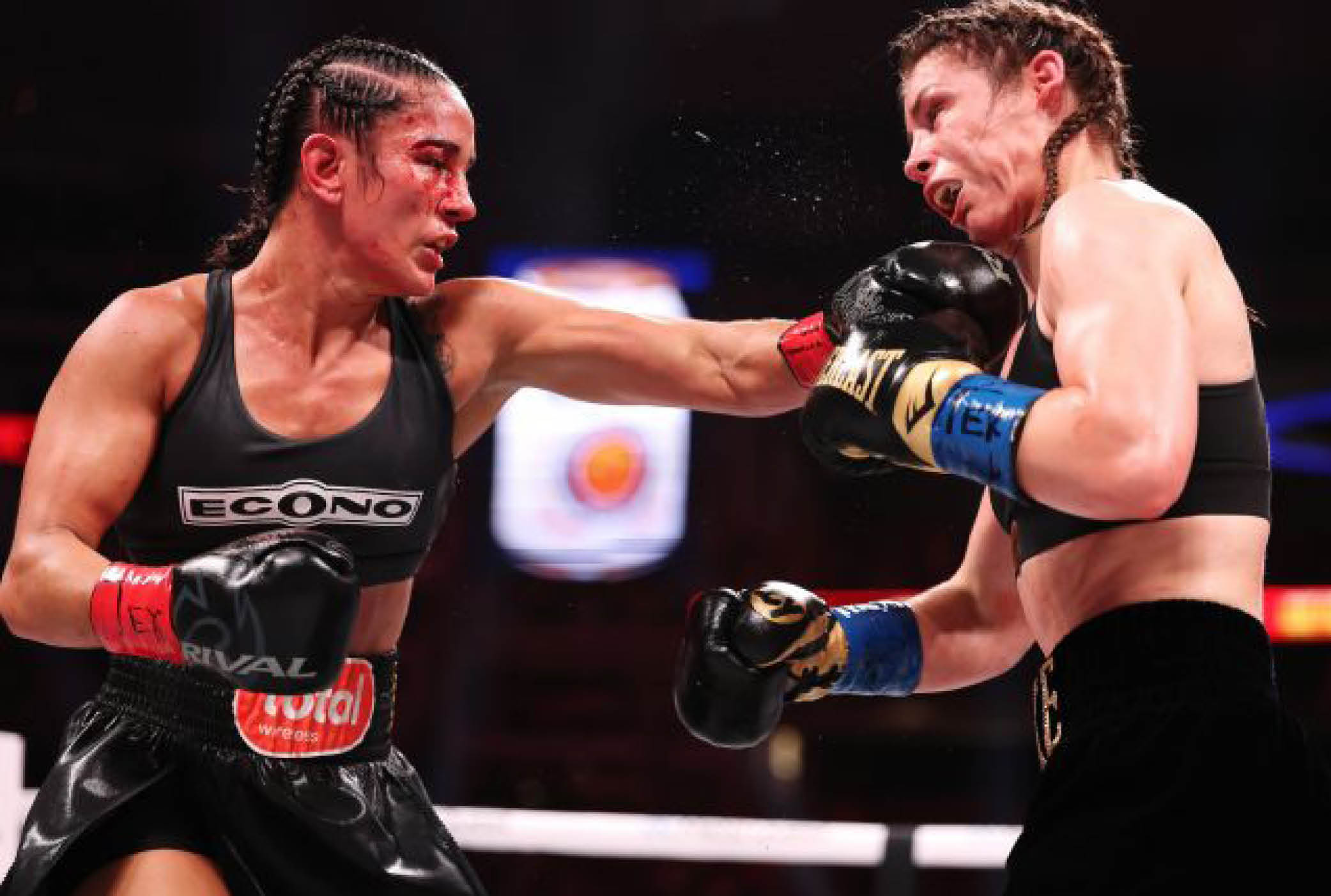
excellence
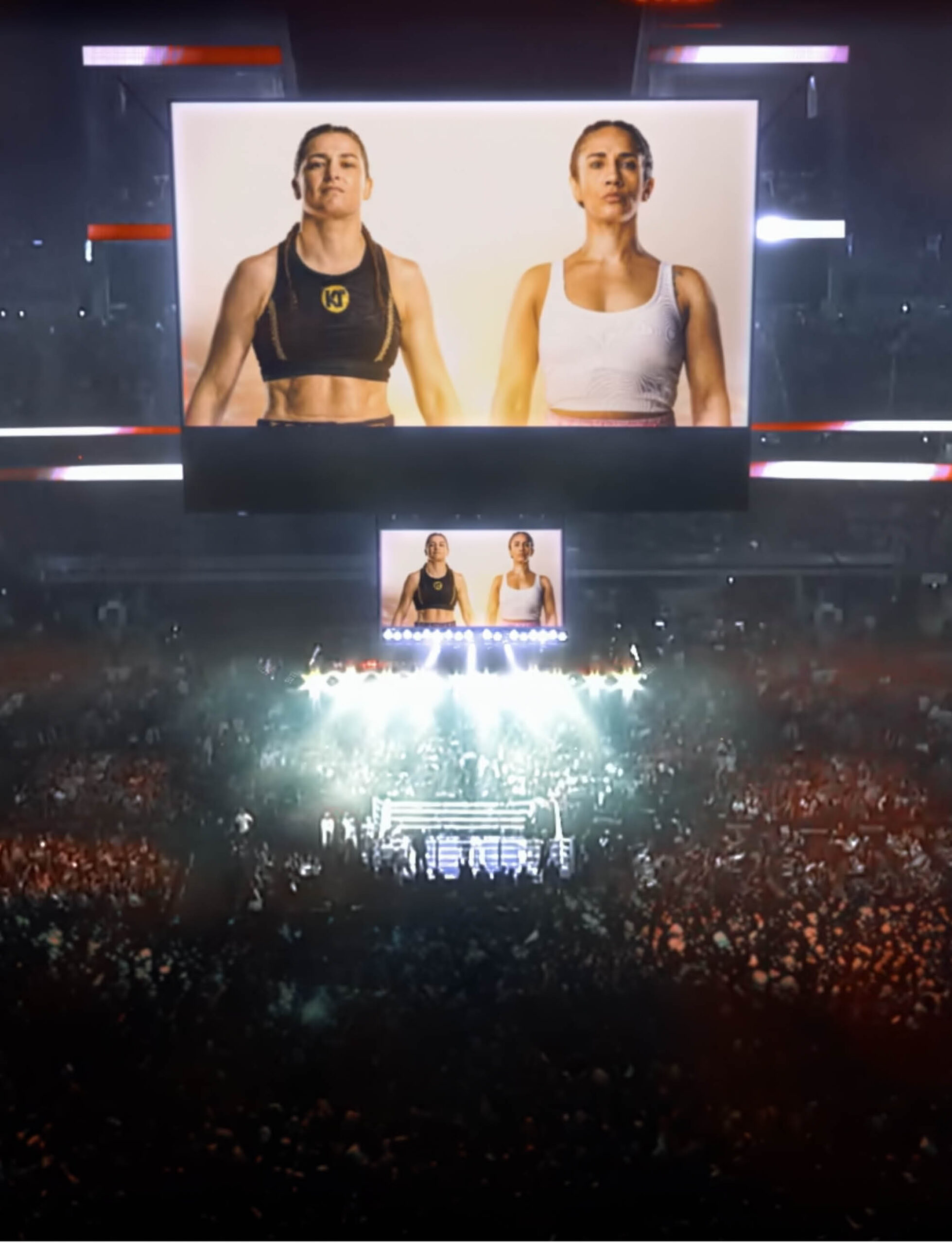
This rematch, staged in Texas, raised the stakes even further. Katie Taylor and Amanda Serrano shared the spotlight as co-headliners, cementing their position as two of boxing’s most bankable stars. While exact figures remain undisclosed, Taylor was anticipated to earn over £4.6 million ($6.1 million), with Serrano’s purse believed to be even higher. Although these figures still pale in comparison to what Jake Paul and Mike Tyson reportedly made for their bout, it marked another milestone in the fight for financial parity in women’s sport. The Netflix deal added another layer of significance, making the fight available to millions worldwide and generating unprecedented exposure for women’s boxing.
A couple of friends turned up that Saturday night, armed with bottles of wine and a selection of cheese—oh, how times have changed. No longer the all-nighter warriors of our 20s, we fell asleep on my living room sofas at around 1 a.m., just as Netflix coverage was about to start. I was rudely awoken by someone looking for the television remote to stop it from turning off automatically. By the time I shook off my half-asleep haze, we were watching an undercard fight I can’t fully recall. A discussion about the presenter, Kate Abdo, her accent blending English, American, and German inflections, woke me up properly.
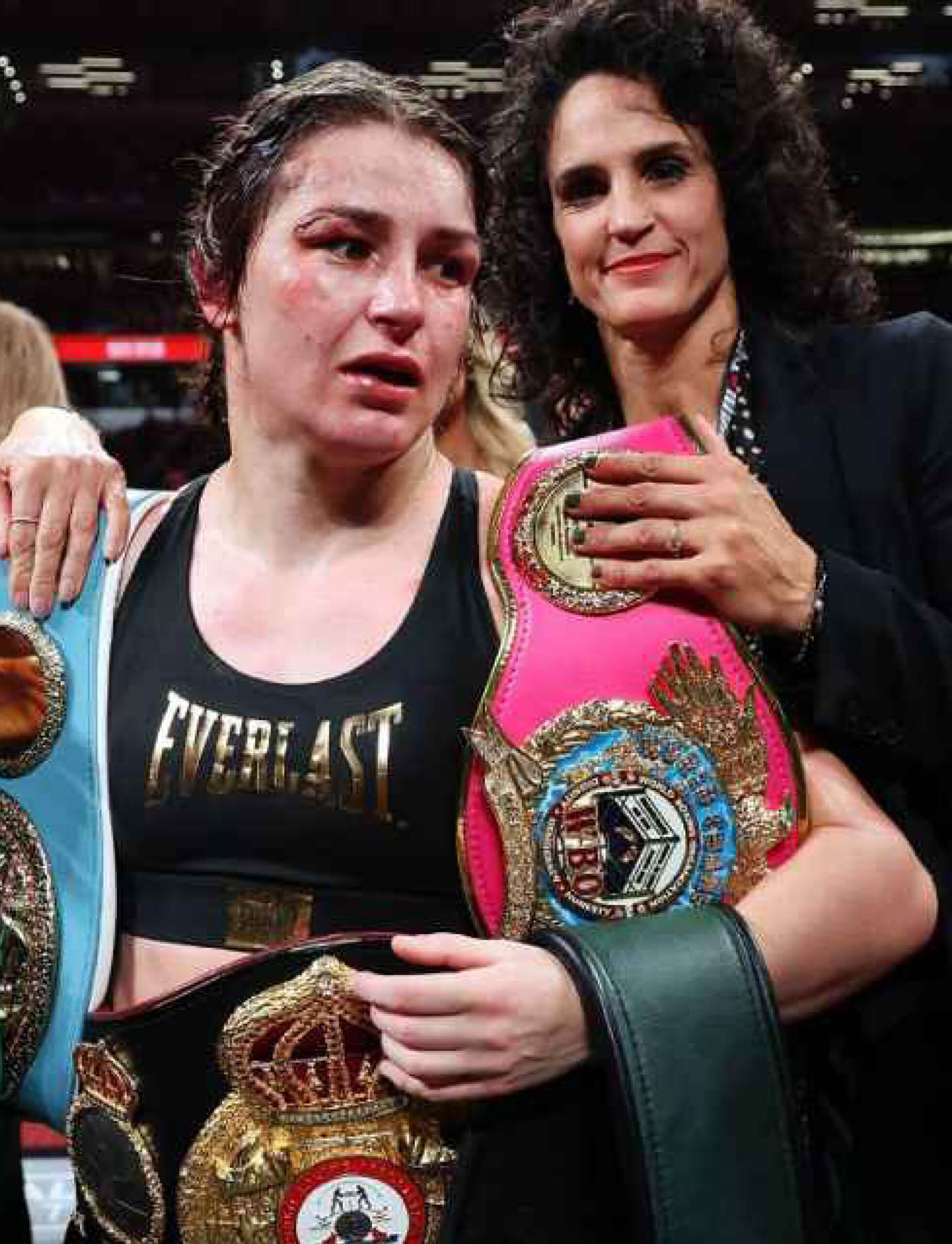
“Come on, Lou! Katie bloody Taylor is about to walk out in half an hour.” “Get an espresso martini going; it’s time!”
The fight itself was gruelling, showcasing why these two are considered the best in the business. Serrano’s relentless aggression dominated the early rounds, forcing Taylor to dig deep into her reserves, but Taylor’s precision counterpunching and remarkable stamina shone as the fight wore on. The bout was intense and bloody, with both fighters reopening old wounds—literally—in what will go down as
one of the most punishing and fiercely contested boxing matches in modern history.
In the final round, the tension hit its peak. Taylor landed a precise right-left combination, but Serrano, undeterred, responded with a fierce offensive that momentarily shifted control. A punishing body shot from Serrano seemed to spell trouble for Taylor, but the Irish champion countered with a perfectly timed hook that rocked the ring. After ten rounds of unrelenting action, Taylor emerged victorious with a unanimous decision, defending her undisputed lightweight title. Judges scored the fight 95-94 across the board, a razor-thin margin that cemented Taylor’s legacy as one of the greatest fighters of all time.
The night wasn’t over yet. When Netflix wasn’t stuck buffering, we sat through Jake Paul’s theatrical entrance, complete with a custom car and what seemed like a fog of Lynx spray filling the arena, followed by Tyson’s understated walkout in classic black boots. The fight itself? A disappointment. A stark contrast to the artistry we’d just witnessed in Taylor and Serrano’s bout. By 6 a.m., as I stumbled off to bed, one thing was certain: there was no doubt about which fight had truly mattered.
By the time the fight ended, my WhatsApp group was alive with reactions. “Fight of the night,” Fred, a die-hard boxing fan, declared. “Bloody love Katie,” added another. “Robbed,” came the inevitable dissenting opinion. Then there was my nurse friend, awake feeding her baby, who had tuned in out of sheer curiosity after seeing the flood of messages. She’d never watched a boxing match in her life but was unexpectedly hooked.
“WTF did I just witness?! That cut though…” she wrote. “Hahaha! Did you like it though?” I asked. “I don’t know… kind of obsessed!?” came her reply.
Since that night, my social feeds have been flooded with articles and reactions—not about Paul-Tyson, but about the co-headliners. Both fighters were issued 30-day medical suspensions by the Texas Department of Licensing and Regulation following their fight—a standard procedure for fighters involved in such high-intensity bouts.
Post-fight, both women were reflective. Amanda Serrano acknowledged the magnitude of the night, saying: “We made history tonight. I’m honoured to share the ring with Katie Taylor.” Taylor, meanwhile, expressed her pride in the fight’s impact, describing it as “a special, special moment” and “the best night of my career.” Eddie Hearn, chairman of Matchroom Sport and the promoter who has been instrumental in shaping Katie Taylor’s professional career, highlighted the bout’s wider implications, stating: “This is a massive moment for boxing. These two women have shown that they can headline major venues and deliver incredible performances, pushing the sport forward.”
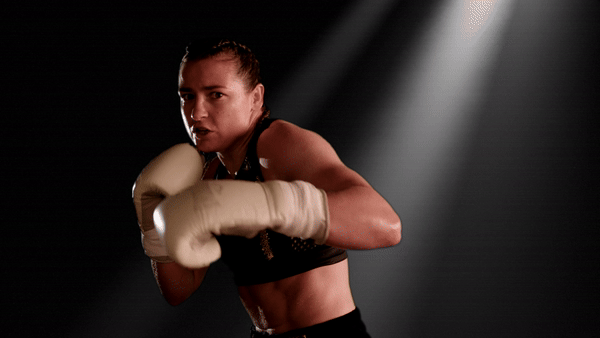
The numbers were equally spectacular. Serrano broke the CompuBox record for most punches landed by a female fighter in a single bout, landing 342 out of 736 thrown. Taylor countered with 624 punches of her own, showcasing why this fight will be remembered as one of the sport’s finest.
Now, compare that to Paul-Tyson. Over eight rounds, Jake Paul threw 278 punches, landing just 78, while Mike Tyson managed only 18 successful punches. For a spectacle billed as one of the year’s biggest events, it hardly delivered in comparison to the relentless pace and skill of Taylor-Serrano.
And then there’s the reach. Netflix reported that nearly 50 million households globally tuned in to the Taylor-Serrano rematch, and some outlets, like CBS Sports, placed the number closer to 74 million. The contrast couldn’t be clearer: one fight showcased skill, grit, and historic significance; the other? Well, let’s just say the stats speak for themselves and reinforce the cultural significance of the event. Serrano has often said her career has been an uphill battle, and this fight was no exception. Events like this showcase the strides women’s boxing has made—and the work still needed to sustain its growth.
Women’s boxing has come a long way. For most of the 20th century, it was banned in many countries. In England, the British Boxing Board of Control only lifted its ban in 1996, finally paving the way for amateur competitions and national championships for young female boxers. By the end of the century, the first European Cup for women’s boxing received approval, marking its growing recognition on a larger scale.
Progress wasn’t without its battles—quite literally. In 1998, Jane Couch became the first licensed female boxer in the UK. This wasn’t handed to her; the British Boxing Board of Control initially refused to grant her a professional licence because she was a woman. With the backing of the Equal Opportunities Commission, Couch challenged the decision and won, forcing the sport to take its first real steps towards equality.
By the 2000s, women’s boxing was picking up momentum. Nicola Adams became the first female boxer to represent England in 2001, and by 2007, she was bringing home silver from the European Championships. Then came the game-changer: the 2012 London Olympics. Women’s boxing was included for the first time, and Adams won the first Olympic gold medal in the sport, making history again as the first openly LGBT athlete to do so. She cemented her legacy by defending her title at Rio 2016.
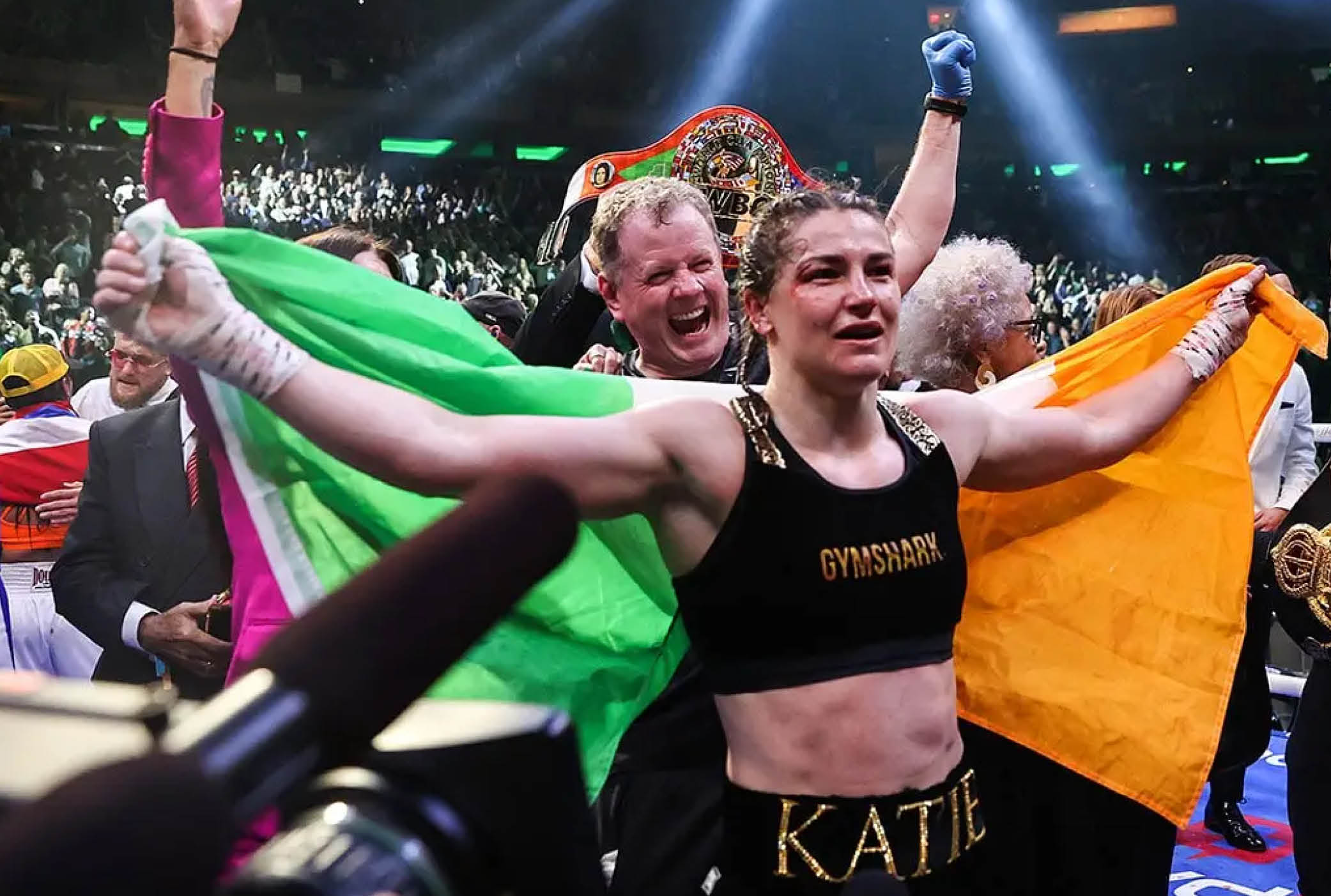
Monumental
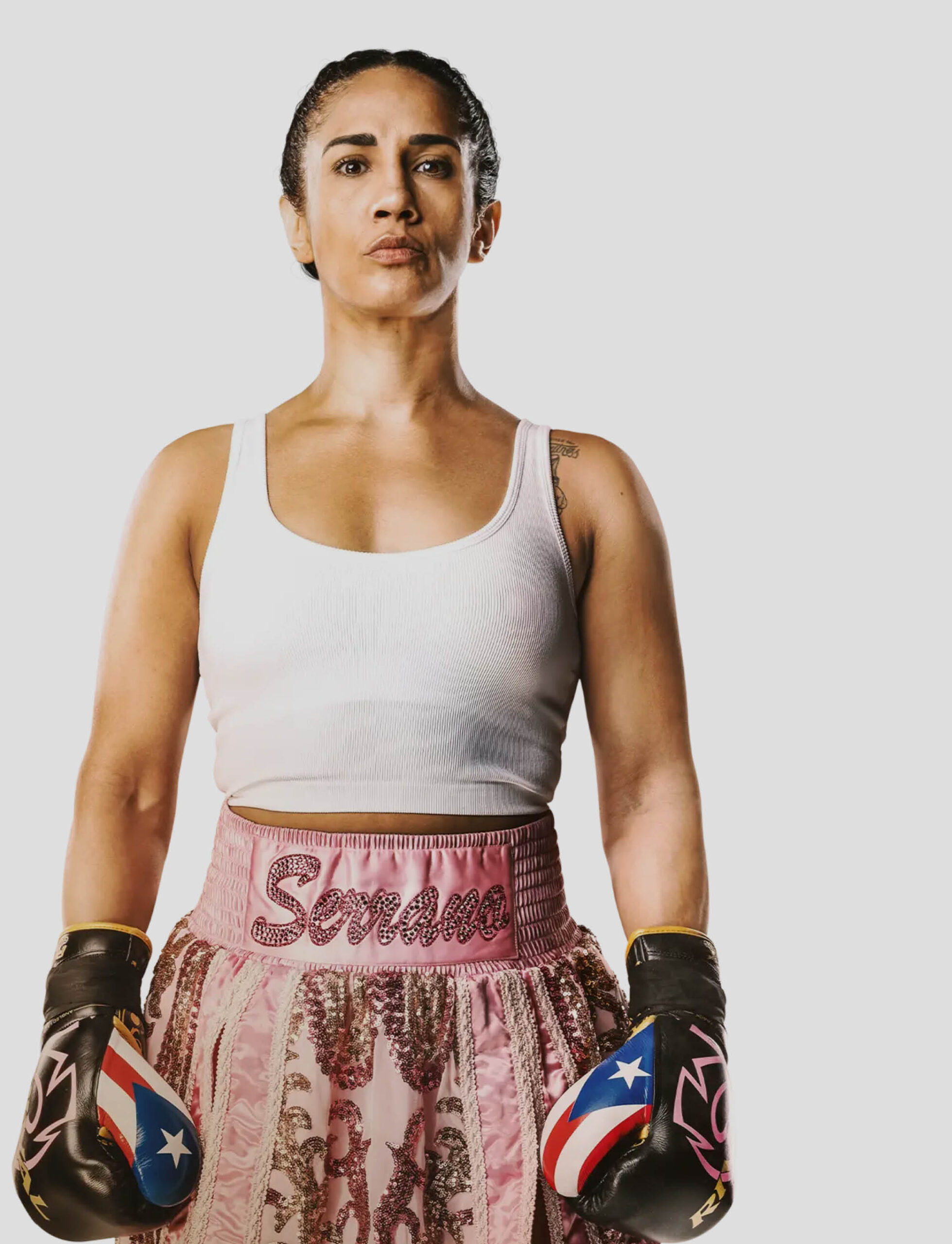
Katie Taylor’s gold medal at the 2012 Olympics was another monumental moment, one she described as “a special, special moment” that validated years of struggle. “I always dreamed of fighting on a big stage, and I knew the Olympics would change things for women’s boxing,” she said. Amanda Serrano, who turned professional in 2009, has often credited Taylor’s success as a driving force for her own determination to push boundaries.
Since then, the sport has grown exponentially. According to a Sport England survey, 420,400 women were regularly involved in boxing or boxing-related activities between 2018 and 2019—a 17% increase from 2015. England Boxing also reported a 65% growth in female membership since 2017. And in 2024, a survey by Our Sporting Life found that 2.86% of women in the UK planned to participate in boxing at least monthly. Not bad for a sport that was banned a few decades ago.

Male allies have also played a crucial role in amplifying the visibility of women’s boxing. Anthony Joshua, one of boxing’s most recognisable figures, has frequently used his platform to spotlight female fighters. “Give credit to the female fighters—Ramla Ali, Katie Taylor, Tasha Jonas,” Joshua, a two-time heavyweight champion, said. “So many good female fighters. We are all assets. It doesn’t matter, female or male. Give people their credit and their dues.” Jake Paul, though divisive, has been instrumental in elevating Amanda Serrano’s profile through his company, Most Valuable Promotions. Serrano herself has acknowledged Paul’s support, saying: “For the first time, I felt like I had a team behind me that truly believed I was the best.”
Promoters like Matchroom Boxing (the powerhouse behind Katie Taylor’s professional career) and Most Valuable Promotions are proving that women’s boxing isn’t just commercially viable—it’s a major draw. Eddie Hearn, the chairman of Matchroom, has been particularly vocal about his belief in the sport, stating: “Women’s boxing is one of the fastest-growing sectors in boxing.” Matchroom’s investment in events like Taylor-Serrano demonstrates that giving women headline opportunities isn’t just about equality—it’s also smart business.
Globally, the rise of streaming platforms has made boxing more accessible than ever, creating new opportunities for the sport to grow. Streaming platforms like Netflix might hold the key to sustaining the momentum of women’s boxing. Historically, accessing live boxing has been a logistical and financial hurdle—pay-per-view fees, clunky apps, and confusing streaming options often deter casual viewers. Netflix’s seamless integration removes many of these barriers. Its decision to air Tyson-Paul and Taylor-Serrano live wasn’t just about expanding its sports catalogue; it was about making boxing more accessible to a global audience. The platform’s ability to reach 240 million subscribers is unparalleled, and events like this demonstrate how streaming can redefine viewership for sport.
This new model isn’t without its challenges. Critics have pointed to buffering issues and concerns about whether subscription-based models can replace the revenue generated by traditional pay-per-view. Yet platforms like Netflix and Amazon Prime are refining their strategies, and as they do, they’re reshaping the way sports are consumed entirely.
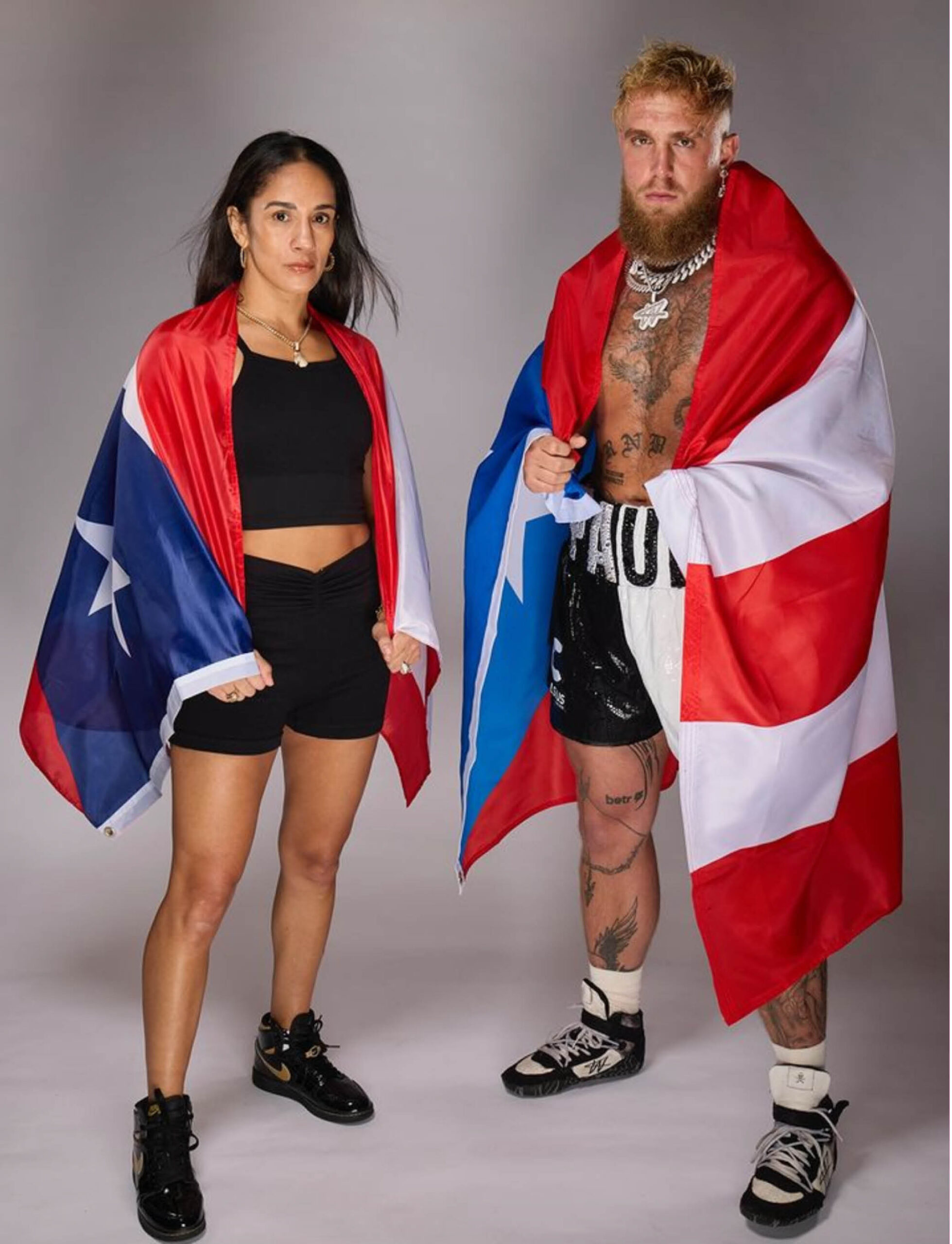
Streaming platforms are also leading the charge in transforming accessibility for women’s sport. The Women’s Super League (WSL) now streams matches for free on YouTube, making the game available to fans who might otherwise have missed out. Since switching platforms, viewership has soared. Over in netball, partnerships with platforms like Sky Sports Mix mean regular broadcasts without additional costs for Sky TV customers, helping the sport reach beyond its core audience. Add to that the BBC’s free-to-air coverage of the Netball Super League, and it’s clear the game is making moves to become more accessible than ever. Meanwhile, Amazon Prime’s multi-year deals to stream WNBA matches and its increasing focus on everything from women’s rugby to niche sports like pickleball highlight a growing commitment to bringing women’s sport into the mainstream. And with the All Women’s Sports Network—a 24/7 streaming channel dedicated to women’s sport—fans now have an entire ecosystem at their fingertips.
For women’s boxing, these platforms offer a glimpse of what’s possible: greater accessibility, higher visibility, and, most importantly, a sustainable path for future growth. If every major women’s fight were as easy to watch as the Taylor-Serrano rematch, the sport’s audience could grow exponentially. Forget clunky pay-per-view fees and geo-locked broadcasts—this is the kind of visibility that proves women’s sport isn’t just viable; it’s essential.
As I reflect on that night, one thing becomes increasingly clear: women’s boxing has arrived to the masses. The Taylor-Serrano rematch wasn’t just a fight; it was a cultural shift. Perhaps geniusly positioned alongside one of the most-watched fights of all time, the stark contrast with the underwhelming Paul-Tyson bout only magnified that women’s boxing could deliver the kind of drama, skill, and spectacle that commands global attention. Serrano, with her relentless style, and Taylor, with her unmatched precision, showed the world what elite boxing looks like.
“I know it was an absolute slugfest and a war,” Taylor reflected afterward. “She’s a tough warrior and a big puncher. This is an amazing moment for women’s boxing.”
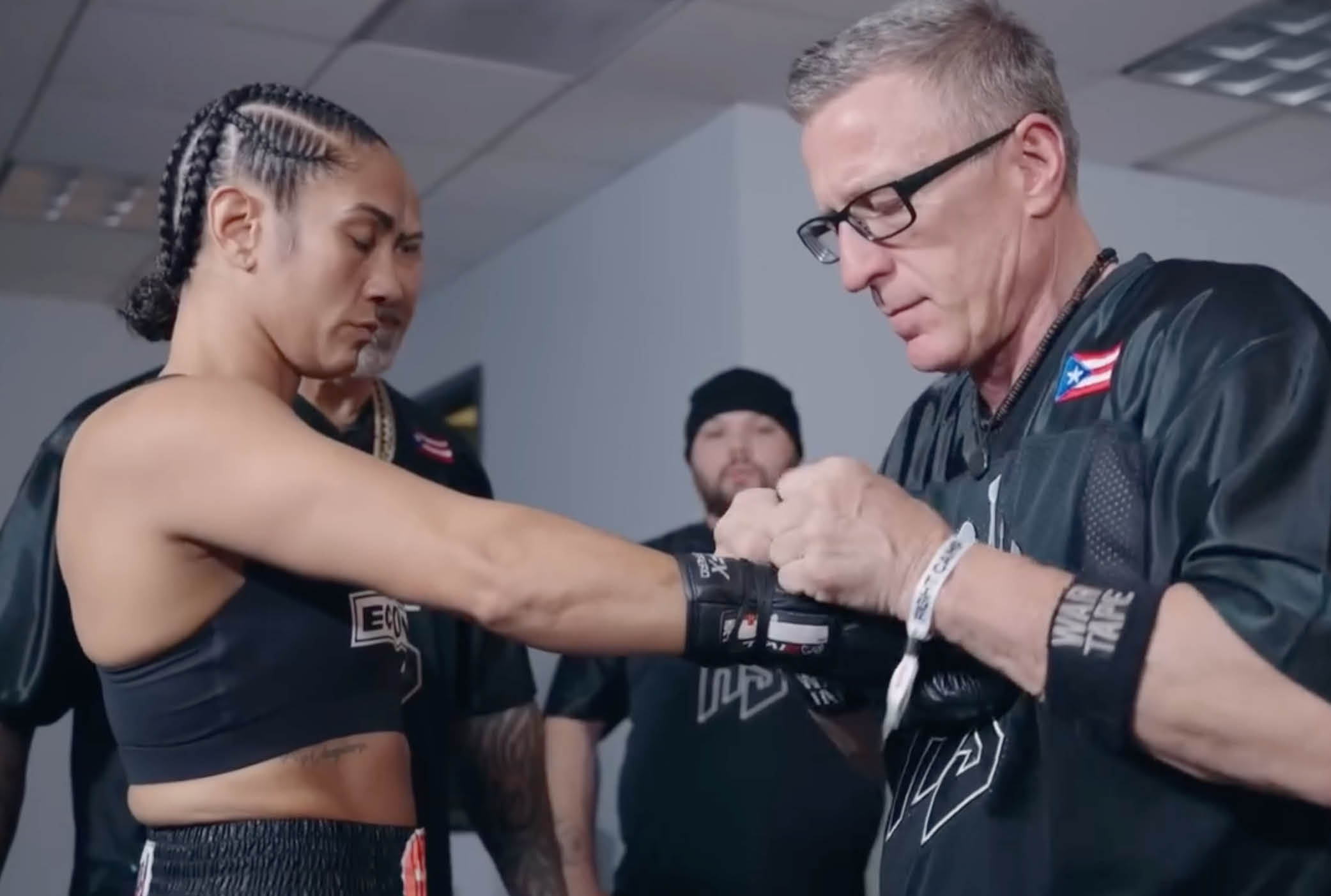
And the audience responded. From packed living rooms to buzzing WhatsApp chats, people weren’t just watching—they were invested. The event ignited a surge of interest in the sport, with global searches for “boxing classes” skyrocketing by 1,212% and searches for “boxing gloves” and “boxing clubs” increasing by 491% and 92%, respectively. Yet, the Taylor-Serrano rematch captured hearts in a way that no statistic could fully explain. It’s a sentiment that resonates far beyond boxing. The success of Taylor-Serrano is proof that women’s sport isn’t merely filling a niche—it’s setting the standard. Their fight wasn’t just about titles or paycheques; it was about redefining what’s possible for women in a historically male-dominated arena.
If the Taylor-Serrano rematch tells us anything, it’s that the conversation around women’s boxing has shifted. It’s no longer about proving the sport’s worth—it’s about expanding its reach and building on its momentum. The barriers that once held women back are falling, one fight at a time. As Taylor herself put it: “We agreed to 12 rounds in the next fight, so the third fight is on.” The sport is evolving, and the fighters are taking it to the next level.
The question now isn’t whether women’s boxing deserves its place in the spotlight. It’s how high it can climb and how quickly the rest of the sporting world will follow its lead. As I booked my next boxing class the following week, I couldn’t help but think: if this is the beginning, what a glorious future lies ahead.
Bring on Taylor-Serrano 3!

Imagery courtesy of Netflix.
Watch the fight here on Netflix.


